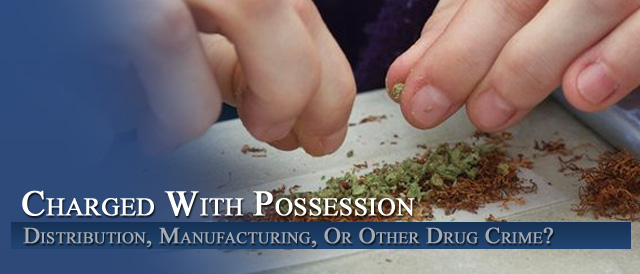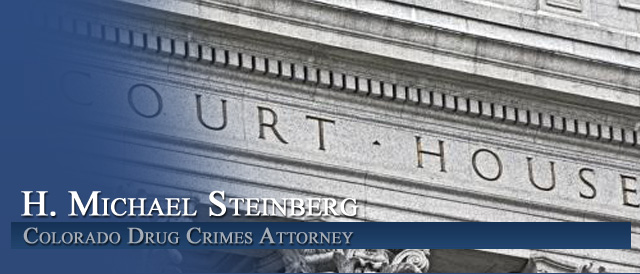




Part III – Understanding Colorado Criminal Law – Questions and Answers About the Authority of Colorado Police and Law Enforcement – Seizures of Persons – SEARCHING OR FRISKING A SUSPECT after a STOP
by Colorado Criminal Defense Lawyer – for the Defense of Those Charged with Crimes in Colorado
My goal here is to assist the average interested person in Colorado to understand the enforcement of Colorado Criminal law and procedure.
This effort will be in FIVE PARTS – This THIRD PART addresses Colorado Laws targeting the FRISKING of a suspect after he/she has been stopped
Frisks (Brief “Surface” Searches)
Frisks are limited searches and are governed by the Fourth Amendment’s reasonableness requirement. They are supposed to be protective and are supposed to be done only to find weapons or other dangerous instruments.
A frisk is not intended to be a search for evidence or contraband and frisks are not automatically justified by a valid stop.
They require independent reasonable suspicion by the officer that his personal safety requires it.
An invalid stop will invalidate objects discovered during a frisk conducted during that stop. The police officer may frisk any suspect when the officer reasonably feels that the police officer’s personal safety requires it. The police officer may frisk a suspect at any point during the police officer’s stop and detention.
Whenever the police have stopped a vehicle or whenever an officer conducts an investigative detention of an occupant of a vehicle which is not moving and the officer has reason to suspect that personal safety requires it, the police officer may require the occupants to leave the vehicle and submit to a frisk for weapons.
The police officer may also inspect those parts of the car into which any occupant can reach and which could contain weapons or dangerous instruments.
If the officer knows that a weapon was used in a particular crime or the crime was one of violence and the stop is made soon after its commission, those facts alone may give the police officer reasonable suspicion to frisk the stopped suspect immediately.
If the police officer frisks a suspect without articulable suspicion that the suspect is armed and dangerous, incriminating items the police officer may find, including weapons, may be excluded at trial.
Suspicion to frisk may arise at any point during a stop and may be based on the following types of factors:
The suspect’s appearance – Is there a bulge in his clothing that suggests to the police officer from the officer’s experience that a weapon is concealed?
The suspect’s actions and words – Did he make a movement as if to hide a weapon as he was approached? Is he unusually threatening or nervous in such a way that the police officer’s experience indicates he may be armed and dangerous?
The suspect’s record and reputation – Does he have a record of weapons offenses? Of violent assaults? In particular, against police officers? This factor alone may justify an immediate frisk.
Companions – Is the police officer outnumbered? This factor alone may not justify a frisk if the suspected crime is not one normally involving or actually involving weapons.
Time and place – Is it dark so the police officer can’t see the suspect well? Is the officer in an isolated area with the suspect? This factor alone may not justify a frisk if the suspected crime is not one normally involving or actually involving weapons.
The police officer should be able to tell a court why, based on the police officer’s observations and experience, a frisk was necessary.
Is There a Right to Temporarily Disarm A Suspect With CCW (Concealed Weapon ) Permit During Stop.
A peace officer may temporarily disarm a CCW permittee, incident to a lawful stop of the permittee. The peace officer shall return the handgun to the permittee prior to allowing the permittee to leave the scene. [C.R.S. 18-12-214 (1) (b)] Note that the CCW permit does not, by itself, provide grounds for a stop. There still must be independent articulable suspicion of criminal activity. The statute merely permits an officer to “temporarily disarm” a validly stopped suspect, who has a CCW permit.
Conducting a Frisk
Generally, the police officer’s frisk should be no more than a pat- down of the suspect’s outer clothing. It should be done with sufficient care and strength to let the police officer feel any concealed dangerous instruments. If the outer clothing is too bulky, stiff, or hard to allow the police officer to feel a firearm or other dangerous instrument concealed underneath, the outer clothing may be opened to allow a pat-down of the inner clothing. The police officer may go into a pocket only to take out an object that the police officer reasonably believes to be a dangerous instrument.
A frisk cannot be used to search for and seize evidence. If, during a frisk, the police officer feel an item that might be evidence of a crime (e.g., a baggie of marijuana) the police officer may not seize and examine that item unless it is reasonable to believe that it might contain a “weapon.” The police officer can always “ask” the suspect if he will voluntarily show the police officer the item.
However, if the police officer has a reasonable belief, based on reliable information or the police officer’s own observations, that a dangerous instrument is concealed in a specific place on the suspect’s person, for instance in a pocket, waistband, or boot, the police officer may immediately reach into that area before performing a general pat-down in order to determine whether or not a dangerous instrument is concealed there. Adams v. Williams, 92 S.Ct. 1921 (1972).
An Example
Officers stopped Ratcliff after a suspected drug transaction. During a pat-down, one officer felt a “large solid object” in his pocket. The officer retrieved it and discovered that it was a Tic-Tac candy box. Because the box was taped, the officer opened the box to see what was inside and discovered cocaine rocks. The court suppressed the cocaine. It upheld the stop, the frisk, and the retrieval of the box from Ratcliff’s pocket.
However, because the officer expressed no safety concern about the contents of the candy box, the court ruled that the box could not be opened pursuant to the frisk. And because there was no probable cause to arrest at that point, the box could not be opened as a search incident to arrest either.
This is the Colorado Case of – Prosecuted by H. Michael Steinberg in 1989 – People v. Ratcliff, 778 P.2d 1371 (Colo. 89).
Even though the police officer may not search for “evidence” during a frisk, sometimes contraband or evidence may come to the police officer’s attention. In such cases, if it is “immediately apparent” as contraband or evidence, the police officer may seize it under the plain view doctrine. However, if it is not “immediately apparent” as contraband or evidence
(e.g., some type of container), the police officer may seize it, but need a warrant or valid consent to open (“search”) it. Single purpose containers are an exception to this rule.
An Example:
Feeling a “hard object” in defendant’s sock during valid pat-down, permitted the officers to retrieve it to examine it to see if it was a weapon. When bindles fell out, the officers were justified in seizing them under the plain view doctrine. No warrant was needed to search (open) the bindles, because bindles come under the “single-purpose” container rule, which holds that certain containers, such as bindles and gun cases, are commonly used for only one purpose. For this reason, if they are lawfully seized, they can be opened without a warrant because their outside appearance indicates what is inside. The court emphasized that the search of a single-purpose container must be made “proximate in time to the seizure.”
This is from the Colorado Case of People v. Mascarenas (Joseph), 972 P.2d 717 (Colo. App. 98)
There is an “off-shoot” of the plain view doctrine called the “plain feel” doctrine. This doctrine allows the seizure of evidence/contraband during a frisk if the officer can tell what the item is by feeling it. The officer is limited to one touch of the item during the weapons pat down. If the item must be further manipulated to identify it, then the plain feel doctrine does not apply.
An Example:
During a protective frisk for dangerous items, an officer feels what he believes to be crack cocaine in a plastic bag and retrieves the item which turns out to be crack cocaine. The U.S. Supreme Court noted that “frisks” do not justify a seizure of evidence or contraband. However, in this case, during a lawful frisk, the officer’s touch made him believe that the item was crack cocaine inside a plastic bag.
The court ruled that the item could be seized under the “plain feel” doctrine. However, the court noted that the seizure was reasonable only because the officer identified the item based upon “one” touch. Had the officer further squeezed, slid, or otherwise manipulated the object before he could identify it as contraband, then the subsequent seizure would have been invalid.
This is the United States Case of Minnesota v. Dickerson, 113 S.Ct. 2130 (1993)
A frisk may be conducted even if the suspect is handcuffed. People v. Perez, 852 P.2d 1297 (Colo. App. 92).
Frisk of Immediate Area in Vehicle.
As noted above, if the police officer have reasonable suspicion to pat-down an occupant of a vehicle, the police officer may frisk the passenger compartment in any area that might contain a dangerous instrument. Any “furtive gestures” by occupants of the vehicle will provide grounds for a vehicle frisk. Occupants removed from a vehicle should be patted down before the vehicle is frisked for dangerous instruments. People v. Cagle, 688 P.2d 718 (Colo 84). Also, the vehicle may be frisked even though the occupants are being physically restrained outside of the vehicle.
An Example:
Facts gave officer reasonable safety concerns – Search of glove box during vehicle frisk permitted even though driver was seated in patrol car and thus did not have access to it at the time of the frisk. The court noted that the driver would have ultimately had access to it after the citation was issued and was released to leave.
This is from the Federal Case of U.S. v. Palmer, 360 F.3d 1243 (10th Cir 2004)
“Closed” containers inside the vehicle may only be opened if there are articulable grounds to believe they may contain a dangerous instrument. “Open” containers may be examined without any articulable reason to suspect that they may contain a dangerous instrument.
Other Examples:
1. A map pocket (large enough to hold a weapon) with a three-inch opening, was an “open” container and could be examined during a vehicle frisk, without articulable reason to believe it contained a weapon. People v. Weston, 869 P.2d 1293 (Colo. 94).
2. During a valid vehicle frisk, an officer could validly seize a fanny pack found under the seat. However, the fanny pack was a closed container and could not be opened unless it was first palpated to see if it might contain a weapon. People v. Company, 859 P.2d 865 (Colo. 93).
Frisk of Separable Possessions
If the suspect is carrying a handbag, briefcase, knapsack, or the like, and the police officer reasonably believes the item could be used as a dangerous instrument against the police officer or it will make the police officer r frisk of the person difficult, the police officer may take the item and place it out of his reach for the duration of the stop.
The basic rule is that the police officer cannot go into the item as part of a frisk; and, it should be returned unopened at the end of the stop if no arrest is made.
There may be circumstances, however, where the police will have a reasonable suspicion:
(a) that the separable item itself contains a dangerous instrument:
(b) and that the suspect can open the item easily;
and
(c) that if the police officer return it to the suspect, he may take the weapon out and use it against the police officer , the police officer’s fellow officers, or others in the immediate area. In these situations, the police officer must take the least intrusive means to determine if the item contains a dangerous instrument.
The Frisk Procedure
The officer will usually pat or squeeze the exterior surface of the item. If the item is of such a character that patting or squeezing will not reveal its contents, the police officer will usually open the item and conduct a visual inspection. If the police officer sees a closed container inside that could contain a dangerous instrument and that could be easily reached by the suspect when the police officer returns the larger separable item to him, the police officer will then pat or squeeze it or, if necessary, open it for a visual inspection.
An Example:
Officer could search briefcase for weapons when it was removed from defendant’s reach because merely separating suspect from his briefcase… would obviate the danger only for the length of the stop; at some point they would be compelled to return the briefcase to him and thus place themselves in the danger they sought to avoid. United States v. McClinnhan, 660 F.2d 500, 504 (D.C.Cir. 1981)
Of course the police officer may always attempt to get a valid voluntary consent from the person to search these items.
Seizing Items During Frisks of the Person and of Separable Possessions
If, while making a pat-down of the suspect’s clothing or a separable possession, the police officer feels an object which the police officer reasonably suspect is a weapon or other dangerous instrument, the police officer may reach into the area where the object is located and remove it.
If no arrest is made, any items the police officer takes from the person to ensure the police officer’s safety and any non-contraband items the police officer finds in plain view while searching for weapons should be returned to the suspect when the detention is completed.
“The time period during which a detainee ‘may gain immediate control’ of a weapon is the entire period from the initial stop to the detainee’s departure.” U.S. v. Palmer, 360 F.3d 1243 (10th Cir 2004) Michigan v. Long, 103 S.Ct. 3469 (1983).
The courts have created a plain “feel” exception to the warrant requirement that applies to contraband (not evidence). The exception allows the retrieval of any item that is immediately apparent as contraband at the first touch. The exception does not apply if the police officer must further “manipulate” the item to determine what it is. Minnesota v. Dickerson, 113 S.Ct. 2130 (1993).
What About the Police Obtaining the Suspect’s Consent to Remain On The Scene?
Normally, when the police officer exercises the officer’s stop power – the police officer may briefly detain the suspect at the location of the stop. The police officer cannot – on their own – extend the length of detention or move the suspect because of the possibility of the police officer’s actions later being viewed as an arrest on less than probable cause.
However, the suspect may somehow voluntarily agree to remain with the police officer beyond the short period of time necessary for the officer to conduct the officer’s threshold investigation or voluntarily agree to accompany the police officer elsewhere (e.g., to the station house for photos and fingerprints or back to a victim).
When a suspect has consented to the police officer’s request, he remains free to leave at any time unless probable cause develops and the police officer can then arrest him.
An Example:
The police have just stopped a man who fits a very vague description of a man alleged to have just beaten and robbed a woman a few blocks away. He answers the police officer’s questions satisfactorily, but the officer would like to continue questioning him.
The police officer might try to the ruse of explaining to the suspect that he has a right to refuse but if he accompanies the police officer back to the woman, the matter may be cleared up quickly. He agrees, but as the police officer walks back up the street, he changes his mind and says he wishes to leave as he has an appointment. Even though he consented originally, the police officer cannot now force him to return with the police officer to the crime scene.
The police officer stops a vehicle with 3 occupants for a burglary investigation. The driver consents to follow the police officer to the police station. At the station, all three individuals are detained for approximately two hours until a victim identifies items found in the car. The court holds that the police officer had enough suspicion to justify a stop for ID and an explanation of actions, but that the passengers were illegally arrested because of the extended detention. The court says that the driver’s consent to accompany the police officer did not extend to the passengers in his vehicle.
This is the Colorado Case of People v. Trujillo, 710 P.2d 1169 (Colo. App. 85).
The police officer stops a vehicle and issue the driver a ticket. After the police officer gives the driver the ticket and tells him he is free to go, the police officer states that the officer would like to ask him a few questions. He consents and the conversation results in the driver giving consent to a search of his person.
Drug paraphernalia is found in his pants pocket. The court upholds the procedure. It rules that the consent to search was given during a “consensual encounter” which followed a valid stop. It was important to the court that the police officer informed the driver that he was free to leave after giving him the traffic ticket.
This is the Colorado Case of People v. Thomas (Kelly), 839 P.2d 1174 (Colo. 92).
Stops of “Objects” – What is the Length of Time The Police May Detain?
The rules applicable to investigative detention of “objects” are different than those of investigative detentions of “persons.” Basically, the police officer has more leeway in detaining objects. However, the police officer must keep in mind that the police officer’s detention of the object is still a seizure for constitutional purposes and, as such, it must be reasonable.
The police officer need only reasonable suspicion, not probable cause, for such a detention. This is only a limited right to seize the item, this does not give the police officer the right to make a warrantless search of the item. Detention of objects should be used in situations where the police officer may not yet have enough reasonable suspicion to detain a suspect, but the police officer has enough to detain objects in his possession.
The exact length of time the police officer can detain an item will vary with the facts of each case. There is no outside time limit. The primary focus of a court will be upon the police officer’s diligence in minimizing the length of the detention.
An Example:
The police officer has uncorroborated information about a suspect that is smuggling drugs on a certain flight. The police officer approach him at the airport and ask him for consent to search the suitcase he is carrying. He refuses. It will take the police at least 90 minutes to get a trained sniffer dog there to sniff the suitcase and the police officer does not have enough reasonable suspicion to detain the suspect for that long.
Instead, the police officer seizes the suitcase and allows the suspect to go on his way after giving him a receipt for the suitcase and telling him when and where he may claim it. After the dog arrives and indicates the presence of drugs in the suitcase, the police officer obtains a warrant to search it. Drugs are found during the search pursuant to the warrant.
The drugs are later suppressed. The court rules that, while the police officer’s initial seizure was reasonable, the police officer was not diligent in minimizing the length of the detention – the police office had sufficient time to get the dog to the airport prior to defendant’s arrival.
This is the Federal case of US v. Place, 103 S.Ct. 2637 (1983).
What is a Pretext Stop In Colorado?
Both the United States Supreme Court [Whren v. US., 116 S.Ct. 1769 (1996) and Ohio v. Robinette, 117 S.Ct. 417 (1996)] and the Colorado Supreme Court have ruled that a stop is valid as long as there are objective reasons to justify it. An officer’s subjective reasons for the stop are irrelevant.
An Example:
An officer observed a possible drug transaction involving Sosbe’s vehicle. The vehicle then sped away. The officer (based upon objective facts) stopped the vehicle for speeding. Drugs were found during a subsequent search to which the driver consented. The trial court ruled that the stop was invalid because there was no reasonable suspicion to believe the vehicle’s occupant had been involved in a drug transaction. The Colorado Supreme Court reversed. It held that the officer had valid objective reasons for the stop. (i.e., speeding) and the officer’s subjective reasons (i.e., drugs) were irrelevant.
This is from the Colorado Case of People v. Sosbe, 789 P.2d 113 (Colo. 90).
Profiling Statute “Traffic Stops” Requirement of the Police Officer to Provide Identifying Information
C.R.S 24-31-309 (4) (a) (Profiling-officer identification) provides that “a peace officer certified pursuant to this part 3 shall provide, without being asked, his or her business card to any person whom the peace officer has detained in a traffic stop, but has not cited or arrested. The business card shall include identifying information about the peace officer including, but not limited to, the peace officer’s name, division, precinct, and badge or other identification number and a telephone number that may be used, if necessary, to report any comments, positive or negative, regarding the traffic stop.”
Other Articles of Interest:
- Colorado Criminal Law – Your Rights – The Laws Governing Police Contact in Five Parts
- Can An Illegal Police Traffic Stop Lead To An Arrest Because Of An Old Warrant?
- A Denver Colorado Criminal Lawyer On: What You Should If The Police Are At Your Door With A Search Warrant
- Colorado Criminal Law – Illegal Auto Seizures & Unjustifiable Inventory Searches
- Part II – Understanding Colorado Criminal Law -The Authority of Colorado Police and Law Enforcement – QUESTIONING OF A SUSPECT AFTER THE STOP












